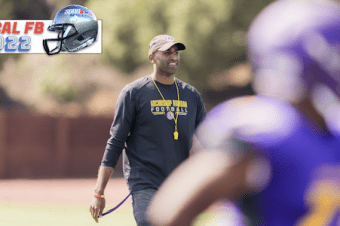

How to Avoid Foot or Ankle Injuries While Running on the Beach
LEVELUP INSIDERSTrack & Field, Anchored by Youth RunnerXC-Track-Running September 1, 2019 Murali Moorthy 0

Six tips for your next jaunt by the sea to keep your feet and ankles injury free.
We live in California so why not capitalize on the beauty of the beach while enjoying the strength-enhancing workout of running on the beach.
Running on the beach can strengthen your ankle and arches more than running on hard surfaces. This is because the sand requires you to generate more force and work through a fuller range of motion. At the same time, this can also cause more of a strain on your joints and muscles.
For those with previous leg, foot or ankle injuries, beach running can be a very difficult goal to achieve. Prior to picking up this activity, it is helpful to talk to your doctor to see if this is the right exercise for you.
If it is the time to start running on the beach, learn my six tips on how to reduce the chances of sprained ankles, shin splints, plantar fasciitis, stress fractures or other foot and ankle injuries.
Warm up your legs before running
As I mentioned, running on the beach will be a harder workout on your leg muscles than running on pavement. This makes it even more important to warm up and stretch before starting. While stretching, you will want to move your major joints and muscles (especially those in the legs) through a full range of motion.
Hold each stretch or movement for 20 seconds. Then when you begin running, start at a slow speed and increase it over a few minutes.
Start on compact sand
When starting to run on the beach, it is helpful to begin with the easier sand to run on first, and that will be firm sand. The sand is firmest around low tide because the receding water has left the sand to dry, becoming firmer.
Generally, beach sand goes from fluffy, loose sand farthest from the water, to a firmer hard packed sand. So the difficulty of beach sand goes like this:
- Compact and dry is easiest.
- Wetter softer sand by the water is a little tougher.
- The loose dry sand furthest from the water is the most difficult, providing the hardest workout.
As with most exercises, you should start easy and that would be dry and firm sand. Once you have gotten used to running on that sand, you may want to try to work your way up to running on the slightly wet sand at the water’s edge. But don’t get your feet wet.
I recommend using the zigzag approach when making this transition. This will have you run for 10 minutes on the dry, harder sand then head to the softer, loose sand for 10 minutes. Continue going back and forth until you have done this rotation five to 10 times.
Once you are used to running on the different types of sand, you can transition to plowing through the loose, dry sand farthest from the water. Depending on your beach, that can be loose sand that’s a little deep or loose sand that’s very deep. The deeper the sand, the harder the workout.
Stick to flat ground
On top of paying attention to how hard the sand is, it is also key to pay attention to if the beach is slanted and not flat. I recommend runners stay away from beaches that are sloped because they often can lead to injuries in the knees and ankles.
If running on sloped sand, you will have one leg that won’t be able to fully extend, which will be tough on your hips and knees.
Consider your shoes to avoid foot or ankle injuries
If you do a quick Google search there are multiple types of shoes that mention they are the best for beach running. If you are only planning on one or two short runs, you can use your normal running shoes. However, if you are wanting to pick this up as a hobby, you should consider the following features when buying beach running shoes.
- Ankle support.
- Quick drying.
- Drain holes.
- Flexible and wider soles.
Another benefit of dedicating a pair of shoes to beach running is that it will let you leave them sandy between runs and only leave you with one pair of damaged shoes from the sand and salt water.
For those who are just starting to run on the beach, it is best to start by wearing shoes. Shoes will provide ankle support and stability. But if you are interested in ditching those sneakers, continue reading about barefoot beach running.
Or forget the shoes and run on the beach barefoot
Some people who run on the beach prefer to go barefoot. Because as a society we are used to wearing shoes all the time, our feet are not as strong as they could be. If you start running barefoot, you could injure yourself by causing or worsening plantar fasciitis, Achilles injuries or ankles sprains.
I recommend people ease into running barefoot. Start with 15 minutes and build up the strength in your feet.
My last bit of advice for those running barefoot is to watch out for broken glass and seashells. These can cause cuts and lead to infection if not properly cared for.
Go slow & stay hydrated
Runners who are used to running on pavement or a treadmill should not expect to run at their usual pace. Do not push yourself and overdo it on the beach.
While running be sure to say hydrated and have enough water available. This tip won’t keep you from injuring your legs but it will prevent dehydration and other heat-related illnesses.
What to do if you get a foot or ankle injury while running on the beach
If you do get injured while running on the beach, the first step is to stop running, which hurts the affected area. Depending on what is causing the pain you may be able to recover by taking a break from running and icing the injury.
But at times you need more help, and that is where I come in. I specialize in foot and ankle injuries and can offer a range of treatment options from medications and braces to injections and surgery.
If you get injured after business hours, our Orthopaedic Express by MOS is here for you. It is open from 3-8 p.m. during the week and offers extra hours on holidays.










No comments so far.
Be first to leave comment below.